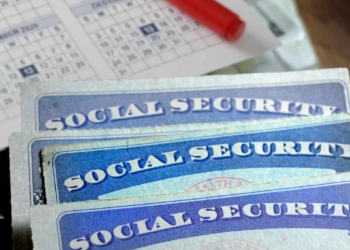With roughly sixty days remaining until the next income tax filing period begins, this cycle is expected to be defined by numerous questions and adjustments. The most certain aspect of the current fiscal environment is the anticipation of substantial changes.
The implementation of new tax provisions under the One Big Beautiful Bill (OBBBA), passed in July 2025, creates a significantly different landscape. These changes impact everything from the treatment of tip income to the likely introduction of new forms.
What to know about the next tax season: bigger refunds and more changes
For the 2026 filing cycle, no major adjustments to the official tax season calendar are currently expected. However, several serious regulatory changes could impact specific taxpayer groups.
These adjustments affect individuals with auto loans, retirees, and the tax exemption on overtime for certain workers. Additionally, an increase in the Child Tax Credit amount is noted. The IRS has also stated it will stop issuing paper refund checks, making direct deposit mandatory.
Projections on refund amounts to expect
Millions of Americans anticipate receiving a tax refund and plan its use in advance. A notable point for 2026 indicates that many taxpayers might see a larger refund. This potential increase stems from applying new deductions and credits, combined with late adjustments to income tax withholding tables, which may have caused some employers to withhold more than necessary.
The IRS typically begins accepting electronically filed income tax returns in the last week of January each year, with the filing deadline set for April 15th, subject to change based on weekends or holidays.
Estimated refund timeline: when will you see a check in your mailbox
Uncertainty about how long it takes to get a tax refund after filing is a common doubt. While an exact date can’t be given, a reasonable estimate based on various factors is possible.
The short answer is that, depending on when you file, you often receive your federal tax refund within 10 to 21 days. If the IRS starts accepting returns in late January, a taxpayer who files immediately and chooses direct deposit could see their refund by mid-to-late February.
New deductions and tax credits could impact times
However, the introduction of several new deductions and credits could cause a slight delay in the start of tax season. This is not unusual and typically only pushes back the beginning of the filing period and initial refunds by a week or two.
Taxpayers with multiple income sources will likely need extra time to gather all necessary tax documentation. Those claiming the Earned Income Tax Credit or the Child Tax Credit generally experience a refund delay of about a month while the IRS verifies eligibility for these benefits.
Tax refund estimation chart for 2026
These dates are not precise predictions, right? Having said that, remember that every filer has a unique situation. Note that the first column shows when the IRS “accepts” the return, which can be 2-3 days after e-filing. Filing a paper return by mail can add an extra 3-4 weeks at the start.
| If the IRS accepts an e-filed return by: | Direct Deposit refund (no paper checks) can arrive ~10 business days later. |
|---|---|
| * IRS may start around January 26, 2026. | You may get your refund as early as: |
| *January 26, 2026 | February 6, 2026 * |
| February 2 | February 13 * |
| February 9 | February 20 ** |
| February 16 | February 27** |
| February 23 | March 6 |
| March 2 | March 13 |
| March 9 | March 20 |
| March 16 | March 27 |
| March 23*** | April 3 *** |
| March 30*** | April 10 *** |
| April 6 *** | April 17 *** |
| April 13 *** | April 24 *** |
| * = Estimated start date for e-filing. | |
| ** = EITC/CTC refunds may be delayed until March for verification. | |
| *** = Peak season filing may involve longer waits. |
Tax return late filers timetable
| After April 15 (IRS accepts by): | Direct Deposit Sent ~10 days later. |
|---|---|
| April 20 | May 1 |
| April 27 | May 8 |
| May 4 | May 15 |
| May 11 | May 22 |
| May 18 | May 29 |
If your tax refund is delayed, consult a tax professional or use the “Where’s My Refund?” tool on the IRS website or the IRS2Go app. Filing electronically as soon as you have all your tax documentation (W-2, 1099s, etc.) usually ensures faster processing.







